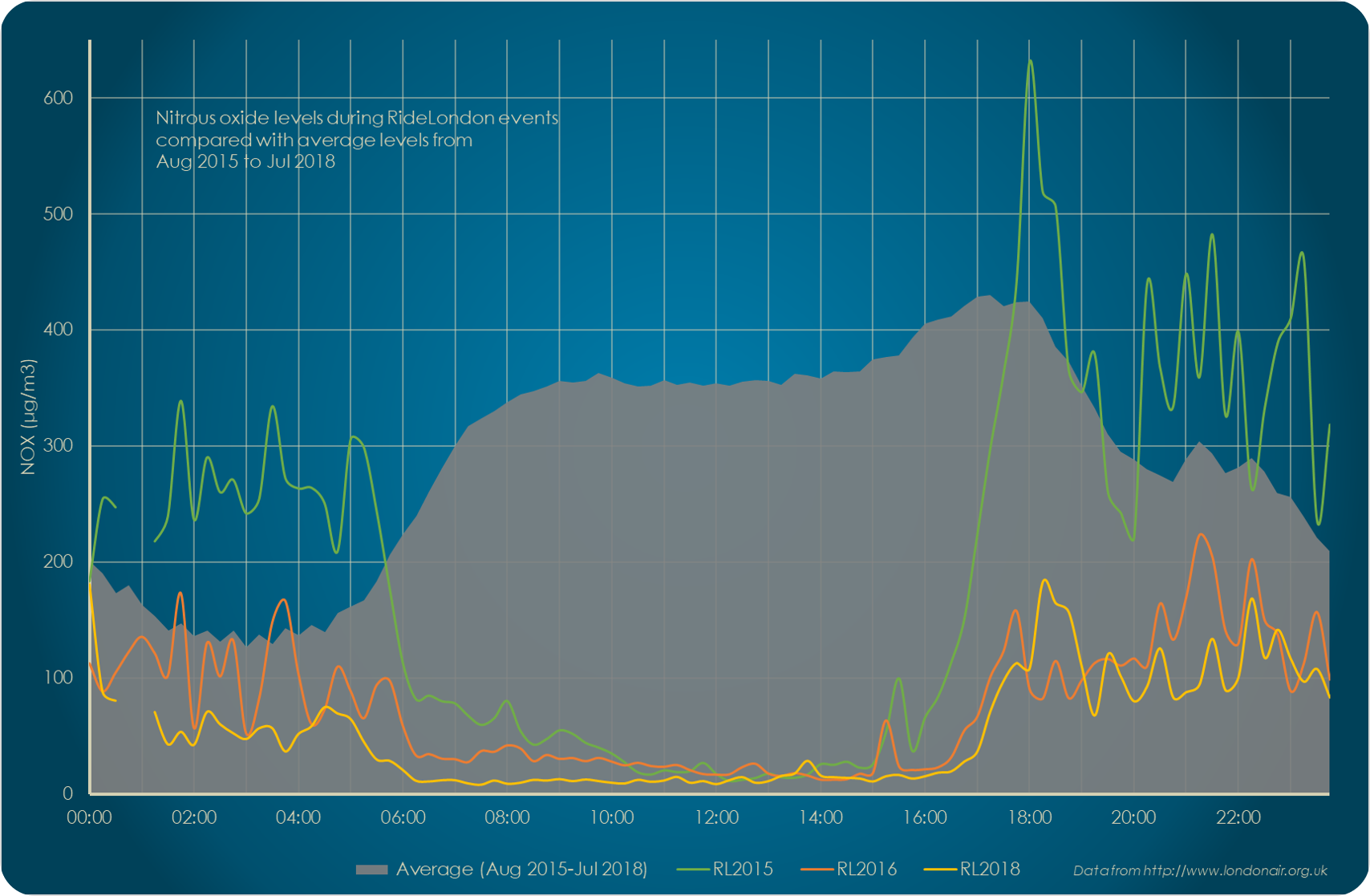Drive less for cleaner air in your city
Nitrous oxide levels during RideLondon events. Data from London Air (1)
Last weekend, road closures for RideLondon 2018 gave us the chance to see the impacts of motorised vehicles on air pollution. The event, in its sixth edition this year, closed off many roads to motorised vehicles in central London for the day, and the results were significant.
While modern cars may have low emission levels individually, the sheer number of vehicles on the road means that this small number adds up to a significant level quickly (e.g. The Strand, where the pollution data was taken, had an annual average daily flow (AADF) of 22,750 motor vehicles in 2017 (2)).
As can be clearly seen in the chart, the levels of nitrous oxides (NOx) were significantly lower than the average level during hours where the roads were closed for the event, showing just how much difference can be made by switching away from motorised vehicles.
NOx, apart from being an irritant at high concentrations, reacts to form smog, acid rain, and leads to the formation of fine particulate matter and ozone at ground level.
In London, emissions from roads account for 58% of NOx emissions in the city (3).
If you want the air in your city to be cleaner, you can easily contribute by switching to an active mode of transport, and choosing only to drive when absolutely necessary. Being active added health benefits too!
(1) London Air, King's College London, http://www.londonair.org.uk
(2) Traffic Counts, Department for Transport, https://www.dft.gov.uk/traffic-counts
(3) City of London Air Quality Strategy 2015, https://www.cityoflondon.gov.uk/business/environmental-health/environmental-protection/air-quality/Documents/city-of-london-air-quality-strategy-2015.pdf
Please stay tuned for our future posts by subscribing to our mailing list. You can sign up in the "follow us" section on the bottom of the page and also find us on social media!

